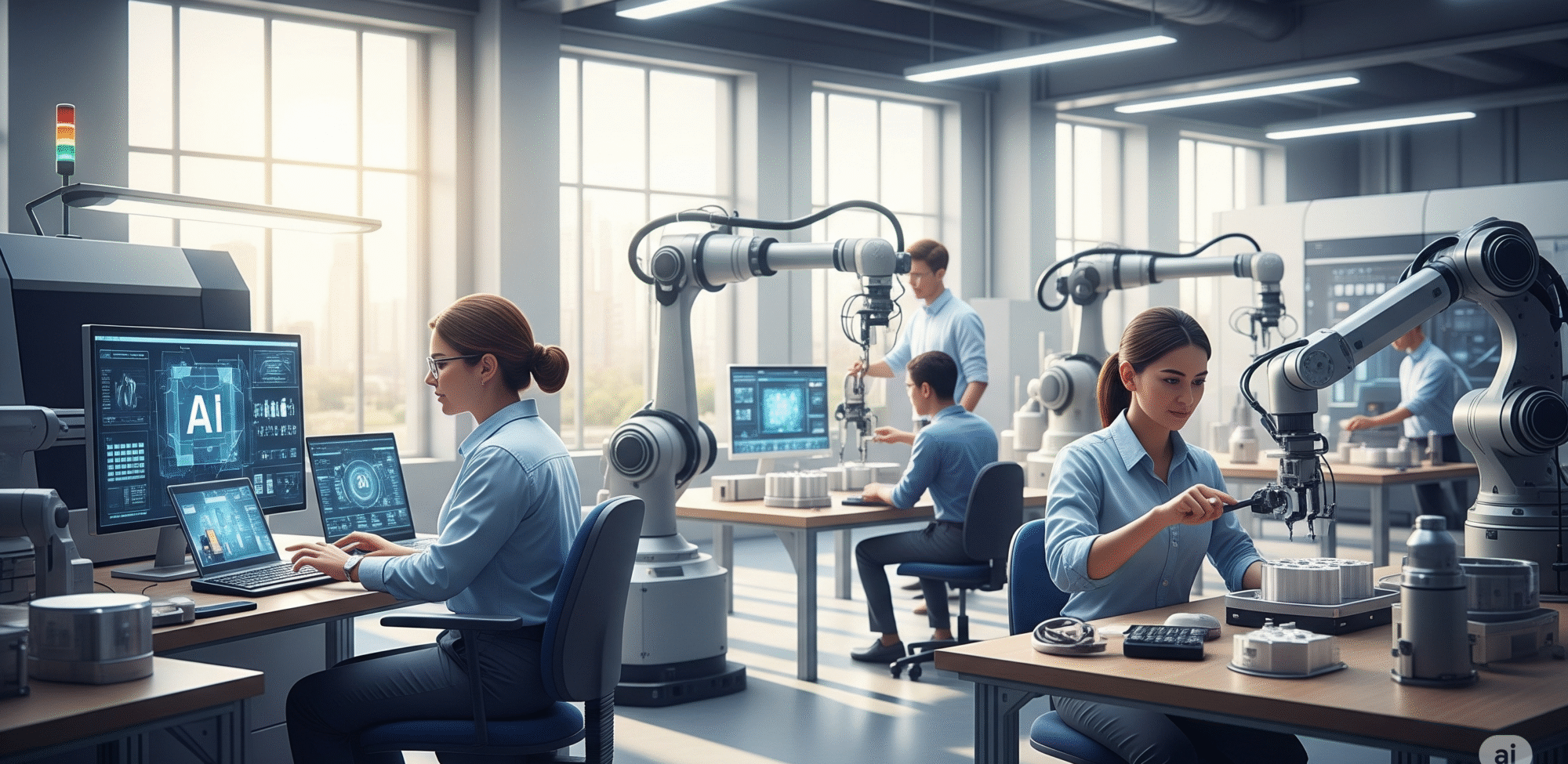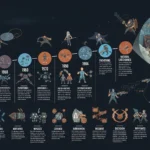
Industry 5.0: How AI + Human Collaboration Will Redefine Manufacturing and Engineering
For those of us who’ve been in the trenches of technology since the days of floppy disks and PLC-based factory automation, each industrial revolution has felt like a tectonic shift. First came steam and mechanization (Industry 1.0), then electricity and mass production (2.0), then computers and automation (3.0). More recently, Industry 4.0 introduced us to smart machines, IoT, and data-driven decisions.
But something even more profound is happening now—something human.
Welcome to Industry 5.0—where humans and AI collaborate to create more personalized, efficient, sustainable, and intelligent manufacturing systems.
Let’s explore what this means, why it matters, and how it’s different from what came before.
From Automation to Augmentation
In Industry 4.0, we focused on automation—getting machines to do as much as possible, reducing human involvement to minimize error and maximize scale. While effective, this approach often ignored creativity, flexibility, and human nuance.
Industry 5.0 flips that narrative.
Here, humans and machines work together, complementing each other’s strengths:
- Machines handle speed, precision, repetition, and data crunching.
- Humans bring empathy, contextual understanding, creativity, and judgment.
The goal isn’t to replace the workforce—it’s to enhance it.
Real-World Applications of Human-AI Collaboration
1. Cobots (Collaborative Robots)
Unlike traditional robots in cages, cobots are designed to work safely alongside humans. In many factories, you’ll see technicians and robots building components together—robots handling the repetitive motions while humans manage quality control or custom adjustments.
2. AI-Driven Predictive Maintenance
AI doesn’t just react to failures—it predicts them. But interpretation still matters. Human engineers are using AI-generated insights to anticipate wear and tear, optimize maintenance schedules, and reduce downtime—without relying solely on guesswork or periodic checklists.
3. Generative Design in Engineering
With AI tools, engineers input requirements (e.g., strength, material, cost constraints) and receive dozens—sometimes thousands—of design options. It’s co-creation, where AI suggests possibilities, and human engineers curate, tweak, and validate the best fit.
4. Mass Personalization
AI makes it possible to manufacture highly customized products at scale—everything from orthopedic implants to custom-designed car interiors. But the real value? Human designers translating customer emotion, taste, and context into AI-friendly inputs.
Why This Matters More Than Ever
1. Workforce Transformation
Contrary to fearmongering headlines, Industry 5.0 isn’t about layoffs. It’s about upskilling. As someone who’s managed large engineering teams, I can say with confidence: the jobs aren’t disappearing, they’re evolving. Operators are becoming analysts. Line workers are becoming AI supervisors.
2. Resilience Over Scale
COVID-19 taught us a painful lesson: just-in-time systems collapse under stress. Industry 5.0 emphasizes resilient, human-adaptable systems—where humans can override automation when needed, and AI can flag vulnerabilities before they break the chain.
3. Sustainability
AI can optimize energy usage, reduce waste, and suggest more sustainable materials. Humans still lead the ethical conversation about what should be optimized and why. That balance is at the heart of Industry 5.0.
My Take as a Veteran Engineer
In the late ‘90s, I helped implement SCADA systems in plants that were running entirely on paper logs. We thought that was revolutionary.
But what’s happening now—this fusion of intelligence and intention—feels even more profound. Not because the tech is better (it is), but because it’s finally centered around people.
Industry 5.0 isn’t just about better outputs—it’s about better outcomes: more meaningful work, more sustainable systems, and more flexible factories that can pivot on a dime.
How to Prepare (If You’re in Tech or Manufacturing)
If you’re leading a team, running a plant, or just getting into the industry, here’s where to start:
- Invest in human-AI collaboration tools, not just automation platforms.
- Train your people to work with AI, not fear it. Upskilling is the new productivity.
- Reimagine your workflows to be flexible and creative—not rigid and rule-bound.
- Measure value not just in output, but in resilience, adaptability, and employee satisfaction.
Final Thoughts
While Industry 4.0 promised smarter factories, Industry 5.0 promises more human factories—factories where intelligence doesn’t just drive efficiency, but empowers people to do their best, most creative work.
I’ve spent my life watching machines get faster, smaller, and smarter. But this next phase?
It’s about making us better—together with machines.
And that’s a future worth building.

